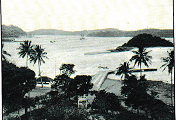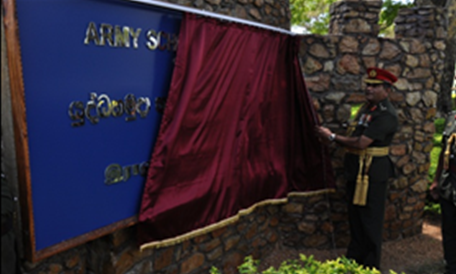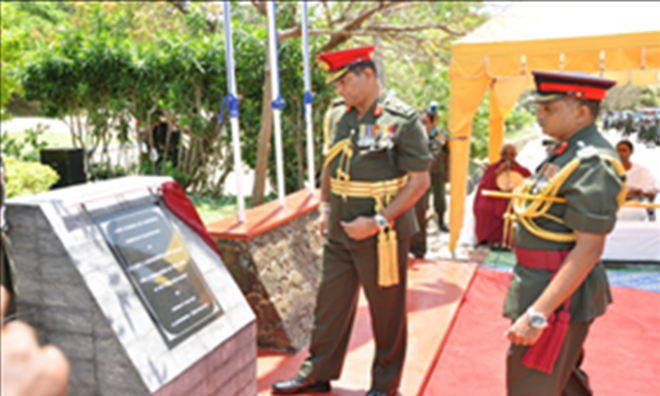Since the early 1900s, Clappenburg area was part of the British Naval and Aeronautic platoons who had set up an air field at China Bay and a naval dockyard for the protection of the deep water natural Harbour of Trincomalee which was of great strategic importance. During this period it functioned as a center for repairing the mechanically damaged air crafts and ships.
Before the Second World War, the British built a large air field to house their Royal Air Force base, called the Royal Air Force Base China Bay, comprising fuel storage and support facilities for the British Fleet. After the fall of Singapore, Trincomalee became the home fort of the Eastern Fleet of the Royal Navy, and submarines of the Dutch Navy. On 9th April 1942, the Trincomalee Harbour and the Air Field were attacked by the Carrier Fleet of the imperial Japanese Navy during their Indian Ocean raid. The targets were British War Ships, Harbourinstallation, and Air Bases. The object was to disrupt the war effort of British Common Wealth Nations and force the British Eastern Fleet to leave Asian waters. HMS Hermes, HMAS Vampire and the flower - class Corvette HMS Hollyhock were sunk during this raid. The Royal Air Force lost at least eight hurricanes and one Fairey Fulmer. The Japanese lost five bombers and six fighters, one in a suicide attack on the Trincomalee fuel tank.


However this installation later served as an important launching point for British Naval Operations in 1944 and 1945. The hangars which are in use even today are part of the original repair facility. The naval and air bases were taken over by the Government of Sri Lanka in 1957 and until such time, Trincomalee was an important base for the Royal Navy. From the 1960s to 1970s, this camp was used as a storage facilities and distribution centre of the Department of Food and subsequently abandoned in 1975. With the advent of the separatist war in 1983, Clappenburg provided shelter to Internally Displaced People escaping from terrorist onslaught. During the 1990s, the Sri Lanka Army etched the very first chapter of using this as an army camp when the 4th Armourd Regiment moved in and occupied the premises.
Later, the task of supplying ammunition and requisites for combat troops located in North was added and Clappenburg was converted in to a Replenishment Park in 1994. After the capture of the A9 Main Supply Route to Jaffna by terrorists, it was used as a transit camp for the transit of soldiers to and from the North and East by the vital sea route. Initially the Transit Camp and the Replenishment Park was commanded by two separate commanders. But in year 2005 both were amalgamated under one commander. In addition to its task a separate recruit training centre was established in 2009 to train around 1000 recruits at once. Soon after the completion of Humanitarian Operations in the North and East, no urgency arose to maintain a transit camp and a replenishment park in this area. Therefore it was decided to close down the entire transit camp and the replenishment park in February 2011 and to establish a separate training centre with the mission to train Officers and Senior Non Commissioned Officers of the Sri Lanka Army in the fields of Logistics. As a result, the Army School of Logistics was auspiciously declared open on 09th May 2011. The Army School of Logistics, is the premier logistics training establishment of the Sri Lanka Army where all tiers of Officers and Senior Non Commissioned Officers of all arms are trained in the fields of Administration and Logistics.


Given these centuries old history, Clappenburg is conducive to gain knowledge. The physical infrastructure has been modernized, although the historic feel continues to add clarity. Contemporary facilities developed, include refurbishing and air conditioning of lecture halls, dining hall and recreational hall, refurbishing and modernization of officers' accommodation, and the establishment of a fully fledged training centre.







